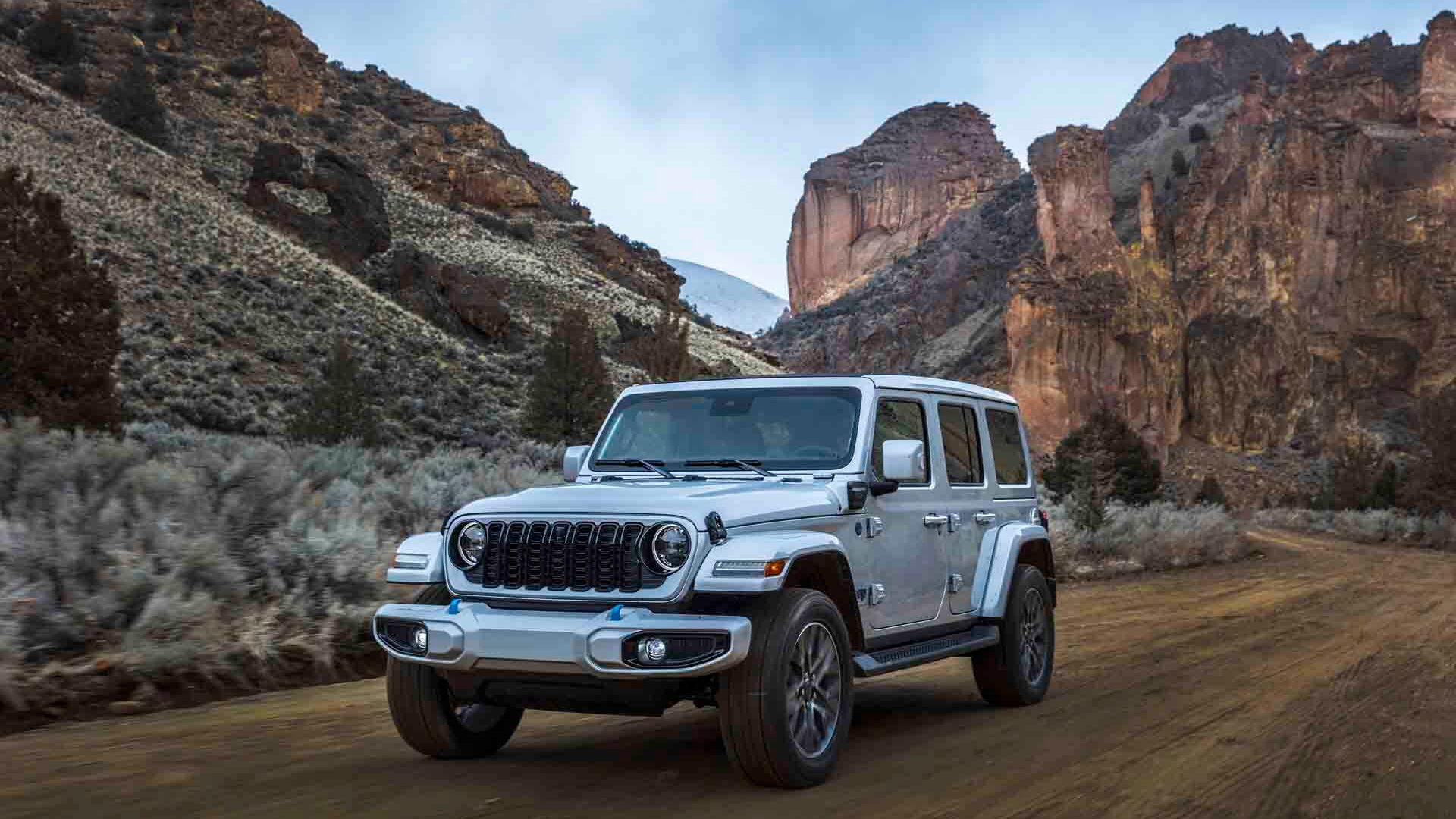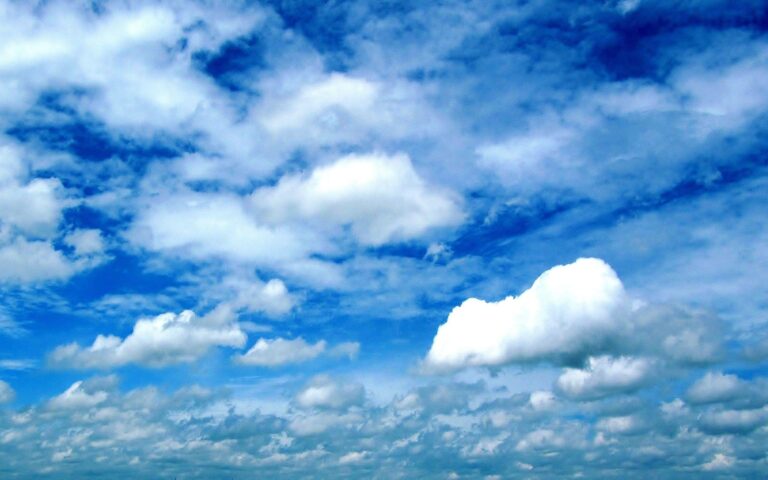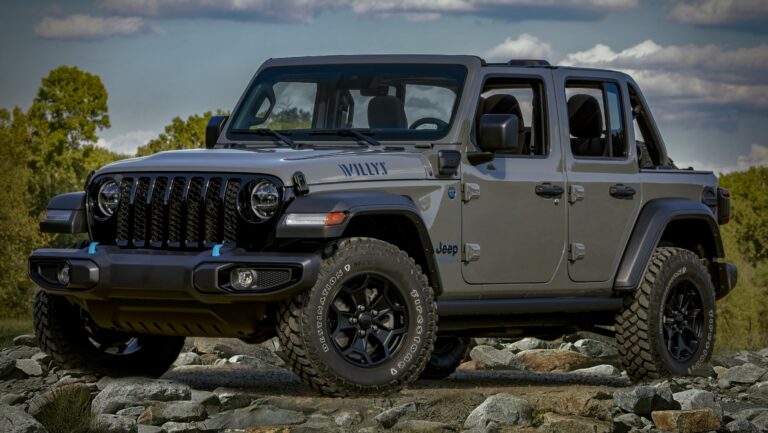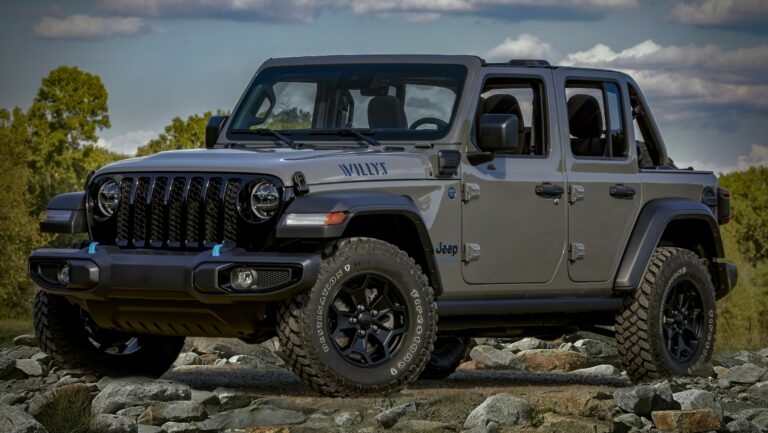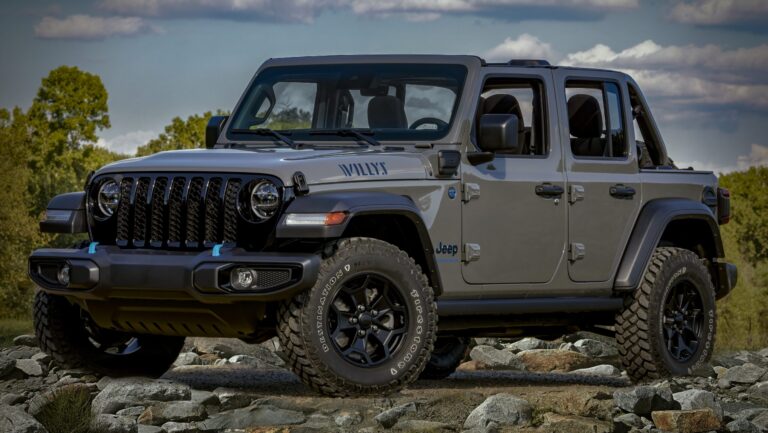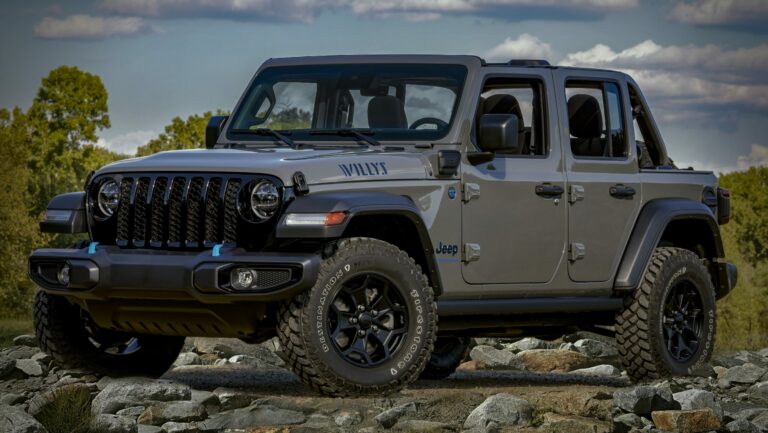Jeep Wrangler 87: The Genesis of an Icon
Jeep Wrangler 87: The Genesis of an Icon jeeps.truckstrend.com
The year 1987 marked a pivotal moment in the history of an American automotive legend. It was the birth year of the Jeep Wrangler, specifically the YJ generation, which succeeded the venerable CJ series. The 1987 Jeep Wrangler, often simply referred to as the "Wrangler 87," wasn’t just a new model; it was a bold step forward for Jeep, aiming to blend the rugged, go-anywhere spirit of its predecessors with improved on-road comfort and safety features. Despite initial controversy over its distinctive square headlights, the Wrangler 87 quickly carved out its own niche, laying the groundwork for what would become one of the most recognizable and beloved off-road vehicles in the world. This article delves deep into the essence of the 1987 Jeep Wrangler, exploring its design, mechanicals, ownership experience, and enduring legacy.
Jeep Wrangler 87: The Genesis of an Icon
I. The Birth of a Legend: From CJ to YJ
For decades, the Jeep CJ (Civilian Jeep) had been the quintessential open-air, off-road vehicle. However, by the mid-1980s, market demands were changing. Consumers wanted more comfort, better highway manners, and enhanced safety features without sacrificing the legendary off-road capability that defined the brand. Faced with increasing liability lawsuits concerning the CJ’s perceived stability issues (though often exaggerated), American Motors Corporation (AMC), then owner of Jeep, made the strategic decision to replace the CJ with a new, more refined model.
Enter the Jeep Wrangler YJ. Launched in 1986 as a 1987 model year vehicle, the YJ (standing for "Yuppie Jeep" according to some detractors, though officially it was just the internal code) was designed to address these concerns. While it retained the iconic removable doors, fold-down windshield, and optional soft or hard tops, nearly every component was new. The frame was wider and more stable, the suspension was redesigned for a smoother ride, and the interior was modernized. This transition was crucial for Jeep’s survival and evolution, ensuring its continued relevance in a competitive automotive landscape.
II. Distinguishing Features of the 1987 YJ
The 1987 Jeep Wrangler YJ introduced several features that set it apart from its CJ lineage and subsequent Wrangler generations.
A. Exterior Design: The Square Headlight Controversy
The most immediate and talked-about departure from the CJ was the YJ’s rectangular headlights. This design choice was met with a mix of shock and derision from traditionalists, who viewed it as a betrayal of Jeep’s heritage. However, AMC insisted it was a modernization aimed at broader appeal. Beyond the headlights, the YJ featured integrated front fenders (unlike the CJ’s separate fenders), a wider track for improved stability, and a slightly lower stance. It was available with various top configurations, including the full soft top, a half-cab soft top, and a removable hardtop, offering versatility for different weather conditions and preferences.
![]()
B. Interior Comfort & Practicality
Inside, the 1987 Wrangler offered a noticeable upgrade in comfort and ergonomics compared to the spartan CJ. The dashboard was redesigned with a more modern layout, improved instrumentation, and better climate controls. Seating was more comfortable, and while still basic by modern standards, it provided a more refined driving experience. Options like air conditioning and an improved heater were available, making the YJ a more viable daily driver for many.
C. Powertrain Options: Robust & Reliable
The 1987 YJ offered two primary engine choices:
- 2.5L AMC 150 I4: This 2.5-liter inline-four cylinder engine was the standard powerplant, producing around 103 horsepower and 132 lb-ft of torque. It was known for its simplicity and reasonable fuel economy, though performance was modest.
- 4.2L AMC 258 I6: The more popular and capable option was the carbureted 4.2-liter (258 cubic inch) inline-six cylinder engine. Derived from a long line of robust AMC engines, it delivered around 112 horsepower and a healthy 210 lb-ft of torque. Its strong low-end torque made it ideal for off-roading and crawling.

Transmission Options:
- Manual:
- Peugeot BA-10/5: A 5-speed manual transmission paired with both engines. While providing an extra gear, it gained a reputation for being somewhat fragile, especially under heavy use or with larger tires. Many owners eventually swapped this out.
- Aisin-Warner AX-5: A more robust 5-speed manual that became available later in the YJ’s production run, often preferred over the BA-10/5.
- Automatic:
- Chrysler Torqueflite 999 (TF-999): A reliable 3-speed automatic transmission, exclusively available with the 4.2L I6.
Transfer Cases:
- New Process 207 (NP207): The standard transfer case, featuring part-time 4WD with high and low ranges.
- New Process 231 (NP231 Command-Trac): A more robust and widely used transfer case that became standard later in the YJ’s life. Both were chain-driven and offered excellent off-road capability.
D. Chassis & Suspension: Enhanced Stability
The 1987 YJ retained the solid axle, leaf spring suspension setup of the CJ, but with significant improvements. The leaf springs were wider and mounted further apart, contributing to the YJ’s improved stability and ride quality. The frame itself was also wider and more rigid, reducing body flex and enhancing safety. This setup provided a good balance of on-road manners and exceptional articulation for off-road trails.
III. Driving the 1987 Wrangler: On-Road vs. Off-Road
Driving a 1987 Jeep Wrangler today offers a unique experience, a blend of vintage charm and surprising capability.
A. On-Road Manners
Compared to the CJ, the YJ was a significant step forward in on-road drivability. The wider stance and improved suspension reduced the notorious "Jeep wander" and provided a more stable ride. However, it’s crucial to remember that the YJ is still a body-on-frame, solid-axle vehicle with leaf springs. It handles like a truck, with a somewhat firm ride, noticeable body roll in corners, and a relatively noisy cabin, especially with the soft top. The carbureted 4.2L can be finicky, particularly in cold weather or at altitude, requiring proper tuning. Highway speeds are achievable but require more effort and concentration than modern vehicles.
B. Off-Road Prowess
This is where the 1987 Wrangler truly shines. The combination of its short wheelbase, excellent approach and departure angles, robust 4WD system (with high and low range), and generous ground clearance makes it an incredibly capable off-road machine. The leaf spring suspension, while simple, offers good articulation, allowing the wheels to stay in contact with uneven terrain. Whether tackling rocky trails, muddy ruts, or sandy washes, the Wrangler 87 feels right at home, living up to its legendary heritage. Its relatively light weight also contributes to its agility off-pavement.
IV. Ownership & Maintenance: Keeping an 87 Alive
Owning a 1987 Jeep Wrangler is a commitment, but a rewarding one. These vehicles are generally robust, but like any classic, they require attention.
A. Common Issues
- Rust: The most prevalent enemy. Check the frame (especially near body mounts and spring perches), floor pans, rocker panels, and rear quarter panels. The galvanized body panels were an improvement, but rust can still be a significant issue.
- Carburetor Issues (4.2L): The Carter BBD carburetor on the 4.2L engine can be prone to vacuum leaks, tuning difficulties, and stalling, particularly after sitting. Many owners opt for aftermarket carburetor upgrades (e.g., Weber) or complete fuel injection conversions (e.g., Howell TBI).
- Peugeot BA-10/5 Transmission: As mentioned, this 5-speed manual can be weak. Look for grinding, difficulty shifting, or excessive noise.
- Steering Play: Worn steering components (tie rod ends, ball joints, steering box) can lead to loose steering.
- Electrical Gremlins: Aging wiring can cause intermittent issues with lights, gauges, or accessories.
- Leaky Tops: Soft tops and hardtop seals can dry out and leak, especially around the doors and windshield frame.
- Leaf Spring Sag: Over time, the leaf springs can sag, reducing ride height and affecting ride quality.
B. Maintenance Tips
- Regular Fluid Changes: Engine oil, transmission fluid, transfer case fluid, and differential fluids are crucial for longevity.
- Rust Prevention: Wash off road salt and mud promptly. Consider applying rust-inhibiting coatings. Address any surface rust before it spreads.
- Carburetor Maintenance (if applicable): Regular cleaning and tuning are essential for the 4.2L.
- Suspension & Steering Checks: Inspect bushings, tie rods, and ball joints regularly for wear.
- Electrical System: Keep battery terminals clean and check wiring for fraying or corrosion.
- Soft Top Care: Clean and treat soft tops to prolong their life. Replace worn seals on hardtops.
- Grease Zerk Fittings: Regularly grease all fittings on the suspension and steering components.
C. Parts Availability
One of the great advantages of owning a YJ is excellent parts availability. Due to the Wrangler’s enduring popularity and the interchangeability of many parts with later YJ models and even some TJ parts, most components are readily available from aftermarket suppliers, online retailers, and even junkyards.
D. Modifications & Upgrades
The 1987 Wrangler is a popular platform for modifications. Common upgrades include:
- Lift Kits: To accommodate larger tires and improve ground clearance.
- Tire Upgrades: Larger, more aggressive tires for off-road traction.
- Engine Swaps: Replacing the 4.2L with a fuel-injected 4.0L from a later YJ/TJ or even V8 swaps.
- Transmission Swaps: Replacing the BA-10/5 with an AX-15 or NV3550.
- Axle Upgrades: Stronger axles for extreme off-roading.
- Aftermarket Bumpers & Armor: For protection and utility.
V. Buying a 1987 Jeep Wrangler Today
Purchasing a classic vehicle like the 1987 Wrangler requires diligence.
A. What to Look For
- Rust, Rust, Rust: This cannot be overstressed. Pay particular attention to the frame (especially near the skid plate, spring hangers, and body mounts), floor pans, and rear corners. Surface rust is manageable, but widespread perforation or structural rust is a major red flag.
- Frame Condition: Inspect for cracks, bends, or poor repair welds.
- Engine & Drivetrain: Check for leaks, unusual noises, and proper operation of the engine, transmission, and transfer case (test 4WD high and low).
- Steering & Suspension: Look for worn components, excessive play, or modified setups that might compromise safety.
- Body & Paint: Assess the overall condition. Original paint is a plus, but look for signs of bondo or poorly repaired accident damage.
- Title & VIN: Ensure the VIN matches all documentation and check for any salvage or flood titles.
B. Inspection Checklist
- Walk-Around: Check body panels for alignment, rust, and damage.
- Underneath: Get the vehicle on a lift if possible. Inspect the frame thoroughly, exhaust, differentials, and transfer case.
- Engine Bay: Look for fluid leaks, frayed wires, signs of poor maintenance.
- Interior: Check gauges, lights, seats, and floorboards for rust.
- Test Drive: Listen for unusual noises, test brakes, steering, and acceleration. Engage 4WD high and low. Test all gears.
C. Price Considerations
The price of a 1987 Jeep Wrangler varies wildly based on condition, mileage, modifications, and geographical location. A highly modified or severely rusted example will fetch much less than a well-maintained, mostly original one. Concours-level restorations are rare but command premium prices.
D. Restoration vs. Daily Driver
Decide your purpose before buying. A project vehicle will require significant time, money, and mechanical aptitude. A well-maintained YJ can serve as a fun daily driver, but it won’t have the creature comforts or fuel economy of a modern car. Be prepared for ongoing maintenance and the unique quirks of a vintage vehicle.
Jeep Wrangler 87 Estimated Price Guide
This table provides a general estimate for the 1987 Jeep Wrangler YJ. Prices are highly dependent on specific condition, mileage, modifications, engine/transmission combination, and regional market demand.
| Condition Category | Estimated Price Range (USD) | Key Characteristics & Notes |
|---|
